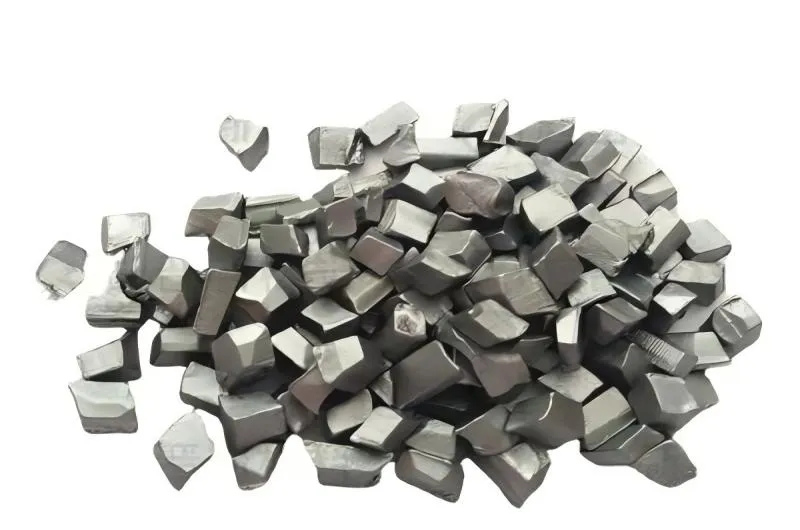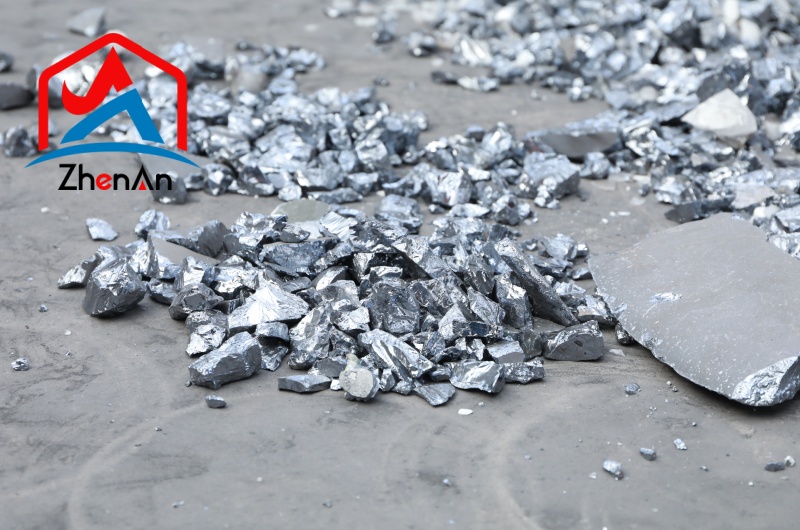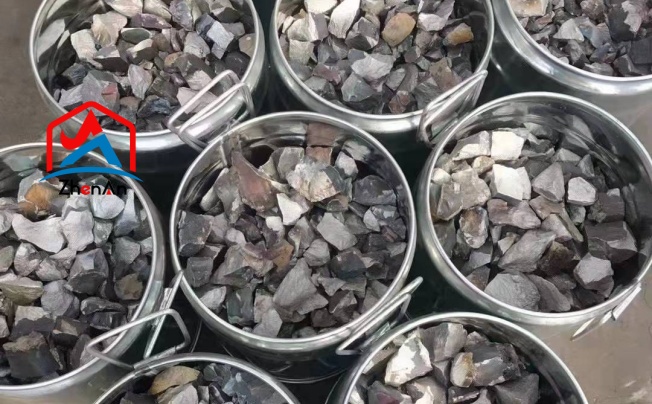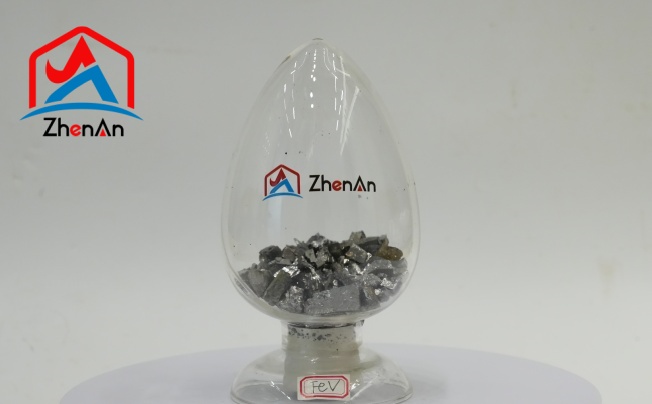BY  GENN
GENN
2024/12
Blog
Does Vanadium Steel Rust?
Vanadium steel is a high-strength alloy commonly used in various industries due to its exceptional mechanical properties. This alloy typically contains small amounts of vanadium, a transition metal known for its ability to enhance the strength and toughness of steel.
What is Vanadium Steel?
Definition and Composition of Vanadium Steel
Vanadium steel, also known as high-speed tool steel, is a type of alloy steel that contains small amounts of vanadium. Typically, vanadium makes up about 0.15% to 5% of the steel composition. This element is added during the production process to refine the grain structure and enhance certain properties of the steel.
Vanadium steel is renowned for its exceptional strength, toughness, and wear resistance compared to traditional carbon steel. Vanadium steel is commonly alloyed with other elements such as chromium, molybdenum, and tungsten to further improve its mechanical properties.
This alloying process results in a fine-grained microstructure that contributes to the steel’s high hardness and wear resistance. The presence of vanadium also aids in promoting fine carbide formations within the steel matrix, leading to improved cutting performance and machinability.
Properties That Make Vanadium Steel Unique
One of the key properties that make vanadium steel unique is its remarkable strength-to-weight ratio. This allows for the production of lightweight yet durable components in various industries where weight reduction is crucial.
Additionally, vanadium steel exhibits excellent hardenability, meaning it can be hardened through heat treatment processes like quenching and tempering to achieve desired mechanical properties such as hardness and toughness. Another standout feature of vanadium steel is its exceptional wear resistance and ability to retain sharp edges even under high-stress conditions.
This makes it an ideal choice for manufacturing cutting tools, drills, saw blades, and other tools requiring prolonged edge retention. Furthermore, vanadium’s contribution to improving heat resistance makes this type of steel suitable for applications involving high temperatures without compromising performance.
Applications of Vanadium Steel in Various Industries
The versatility and superior properties of vanadium steel have led to its widespread use across diverse industries. In the automotive sector, vanadium steels are utilized for producing engine components like crankshafts and gears due to their high strength and fatigue resistance requirements. In the aerospace industry, vanadium alloys are employed in manufacturing aircraft landing gear parts owing to their excellent impact toughness characteristics.
Moreover, the construction industry benefits from using vanadium steels in structural applications where the strength-to-weight ratio plays a critical role in enhancing structural integrity while minimizing material usage. Additionally, medical equipment manufacturers leverage vanadium steels for producing surgical instruments that demand precision cutting capabilities with extended service life.
Unveiling the Intricacies of Rust Formation in Steel
Rust formation in steel is a complex chemical process triggered by the interaction of iron, oxygen, and moisture. This process, known as corrosion, occurs when iron atoms lose electrons due to oxidation upon exposure to oxygen. The presence of water or humidity accelerates this reaction by providing a medium for electron transfer.
As iron oxide forms on the surface of the steel, it weakens the material’s structural integrity and aesthetic appeal. Various factors influence the rate at which steel rusts, including environmental conditions, alloy composition, and surface finish.
High humidity levels or exposure to saltwater can expedite rust formation due to increased moisture content and corrosive ions present in the environment. Additionally, impurities in the steel, such as sulfur or phosphorus, can promote localized corrosion processes like pitting or crevice corrosion.
Strategies for Prevention
To combat the detrimental effects of rust on steel, several preventive measures are commonly employed in industries worldwide. One prevalent method is coating steel surfaces with protective layers such as paint or specialized coatings that act as barriers against moisture and oxygen.
These coatings create a physical shield that impedes direct contact between the metal surface and corrosive agents. Another effective approach to preventing rusting in steel is through cathodic protection techniques like galvanization or sacrificial anode systems.
By introducing a more reactive metal (such as zinc) that corrodes preferentially to protect the underlying steel substrate, these methods sacrifice themselves to safeguard the primary material from oxidation damage. Furthermore, controlling environmental factors such as temperature and humidity levels can help mitigate the risk of accelerated rust formation on exposed steel surfaces.
The Science Behind Rust Prevention with Vanadium
Alloying Elements and Corrosion Resistance
The addition of alloying elements like vanadium, chromium, and nickel in stainless steel plays a crucial role in enhancing corrosion resistance. These elements alter the structure and properties of the steel, making it more resistant to rust formation. Chromium, in particular, forms a passive oxide layer on the surface of the steel, which acts as a barrier against corrosive agents.
Nickel improves the ductility and toughness of the steel while also contributing to its resistance to oxidation. Vanadium’s presence helps in promoting fine-grain structures that further improve the steel’s corrosion resistance.
The Importance of Passivation Layers
Passivation layers are essential for stainless steel as they provide an additional level of protection against rust formation. These layers are typically composed of chromium oxide or other compounds that form a stable film on the surface of the steel.
This film acts as a shield, preventing the underlying metal from being exposed to oxygen and moisture—key factors in rust formation. Passivation not only enhances corrosion resistance but also improves the aesthetic appeal of stainless steel by maintaining its luster over time.
Vanadates Forming Protective Layers
Vanadates are compounds formed when vanadium reacts with oxygen or other elements present in the environment. These vanadates can create a protective layer on the surface of steel, acting as a physical barrier against corrosive elements.
The formation of these protective layers is crucial for ensuring long-term rust prevention in vanadium steels. By facilitating the growth of these vanadate layers through proper alloying techniques and surface treatments, manufacturers can significantly enhance the anti-corrosion properties of steel products containing vanadium.
Vanadium Steels vs Stainless Steels: a Comparative Analysis
Differences Between Vanadium Steels and Stainless Steels
When comparing Vanadium steels to stainless steels, one of the primary distinctions lies in their composition. Vanadium steels typically contain a higher percentage of vanadium as the alloying element, contributing to their exceptional strength and wear resistance.
On the other hand, stainless steels are characterized by their high chromium content, which imparts excellent corrosion resistance and a bright finish. Additionally, vanadium steels are known for their ability to maintain toughness even at high temperatures, making them suitable for applications where extreme conditions are prevalent.
Moreover, the microstructure of vanadium steel differs from that of stainless steel. Vanadium steel often exhibits a fine-grained structure due to the presence of vanadium carbides that form during heat treatment.
This microstructure enhances the mechanical properties of vanadium steel, making it highly resilient to wear and fatigue compared to stainless steel variants. In contrast, stainless steels possess a more homogeneous structure with chromium-rich regions that promote passivation and corrosion resistance.
Advantages and Disadvantages for Each Type When It Comes to Corrosion Resistance
In terms of corrosion resistance, stainless steels have long been favored for their ability to withstand rusting in various environments. The chromium content in stainless steel forms a passive oxide layer on the surface that acts as a barrier against corrosive agents such as moisture and chemicals. This inherent corrosion resistance makes stainless steel ideal for applications where maintaining aesthetics and preventing rust are paramount concerns.
Conversely, while vanadium steels may not offer the same level of corrosion resistance as stainless steels due to lower chromium content, they excel in areas requiring superior strength and durability. The addition of vanadium enhances the hardenability and wear resistance of these steels, making them well-suited for tools, machinery components subjected to abrasive wear, and high-temperature environments where traditional stainless steels may falter.
Examples Where One Type Might Be Preferred Over the Other
The choice between vanadium steel and stainless steel often depends on specific application requirements. For instance, in industries such as automotive manufacturing where components face both mechanical stress and exposure to corrosive elements like road salts or acidic fumes, using vanadium steel can provide a balance between strength and limited corrosion protection. Tools used in cutting or shaping operations benefit greatly from the wear-resistant properties of vanadium steel.
On the other hand, in architectural projects or marine applications where aesthetics play a significant role alongside corrosion resistance demands – such as coastal structures or luxury yachts – opting for high-grade stainless steel is more prudent. The bright finish and superior rust-prevention capabilities of stainless steel ensure longevity while maintaining visual appeal in these settings.












